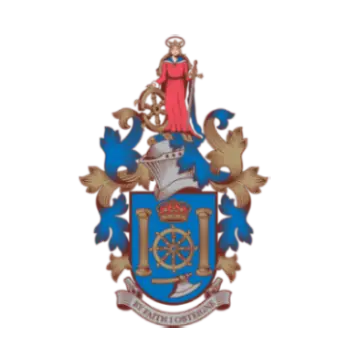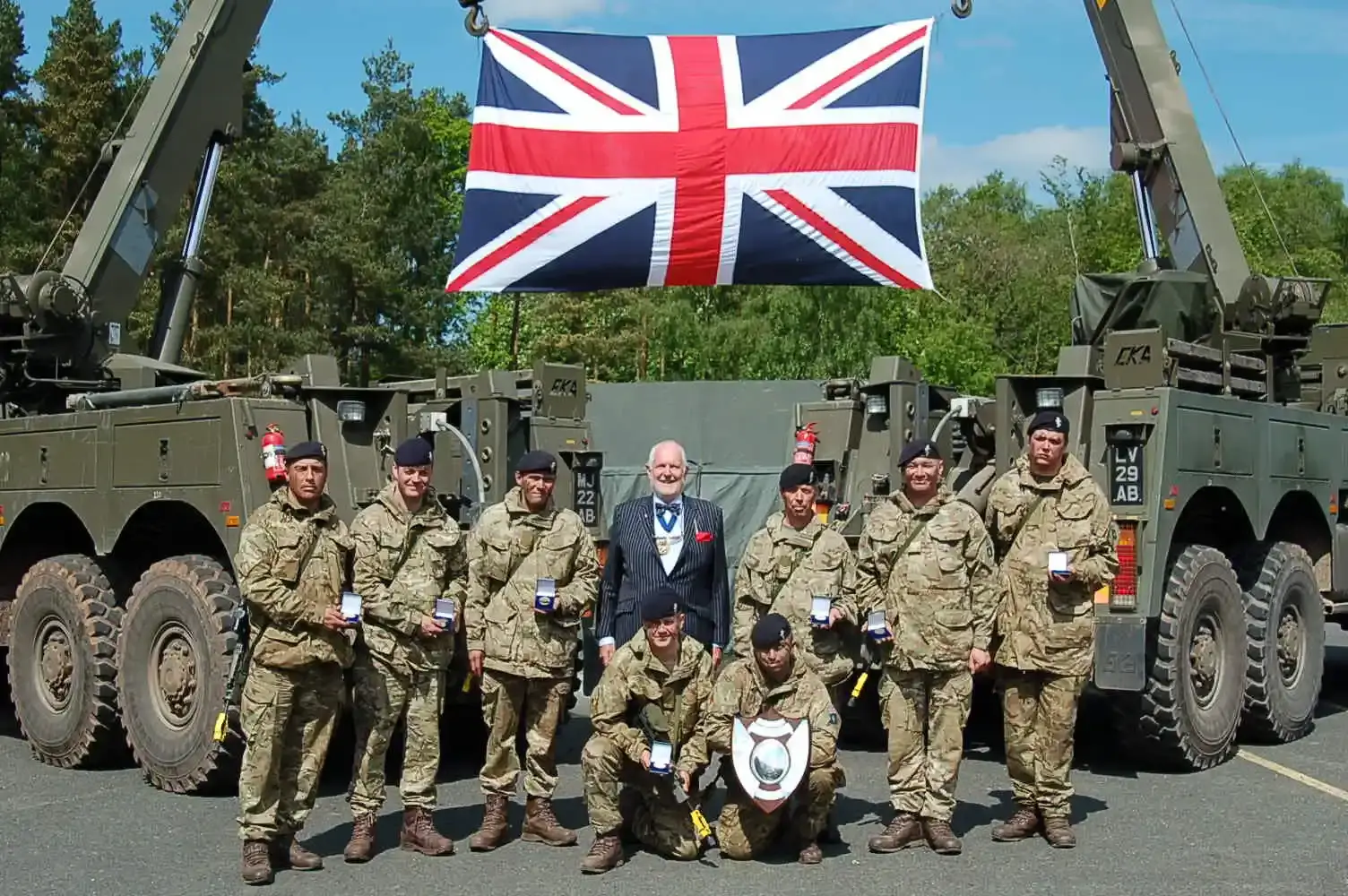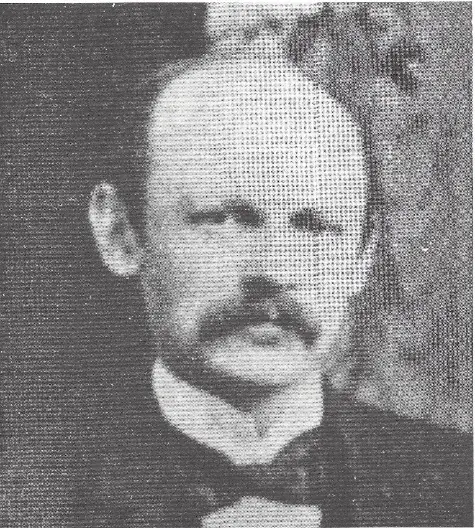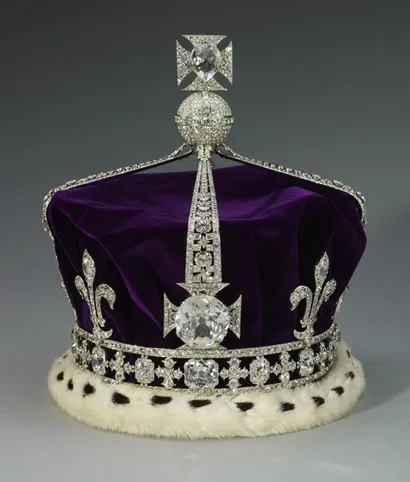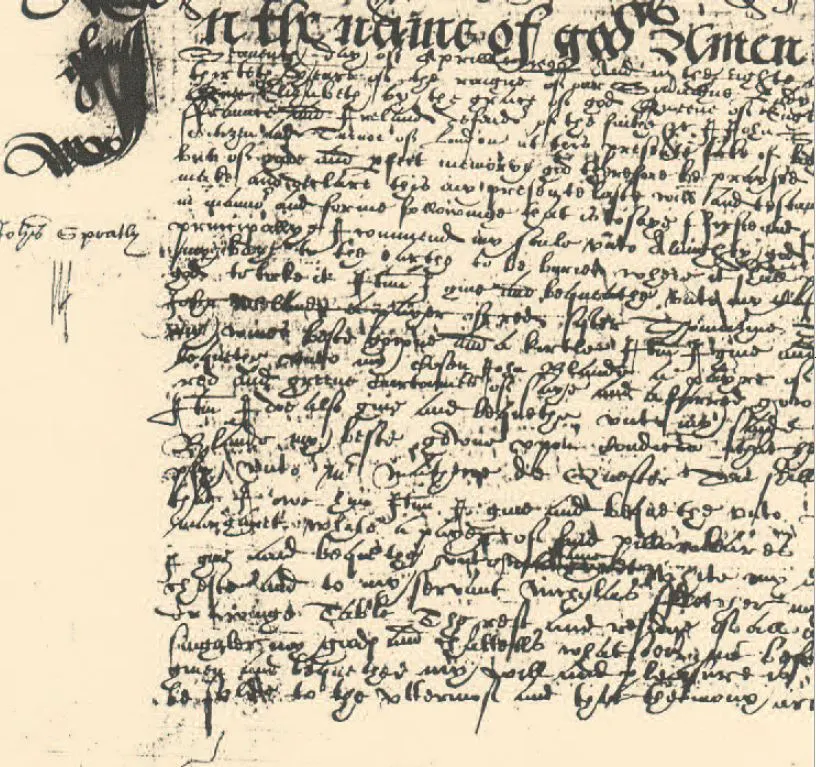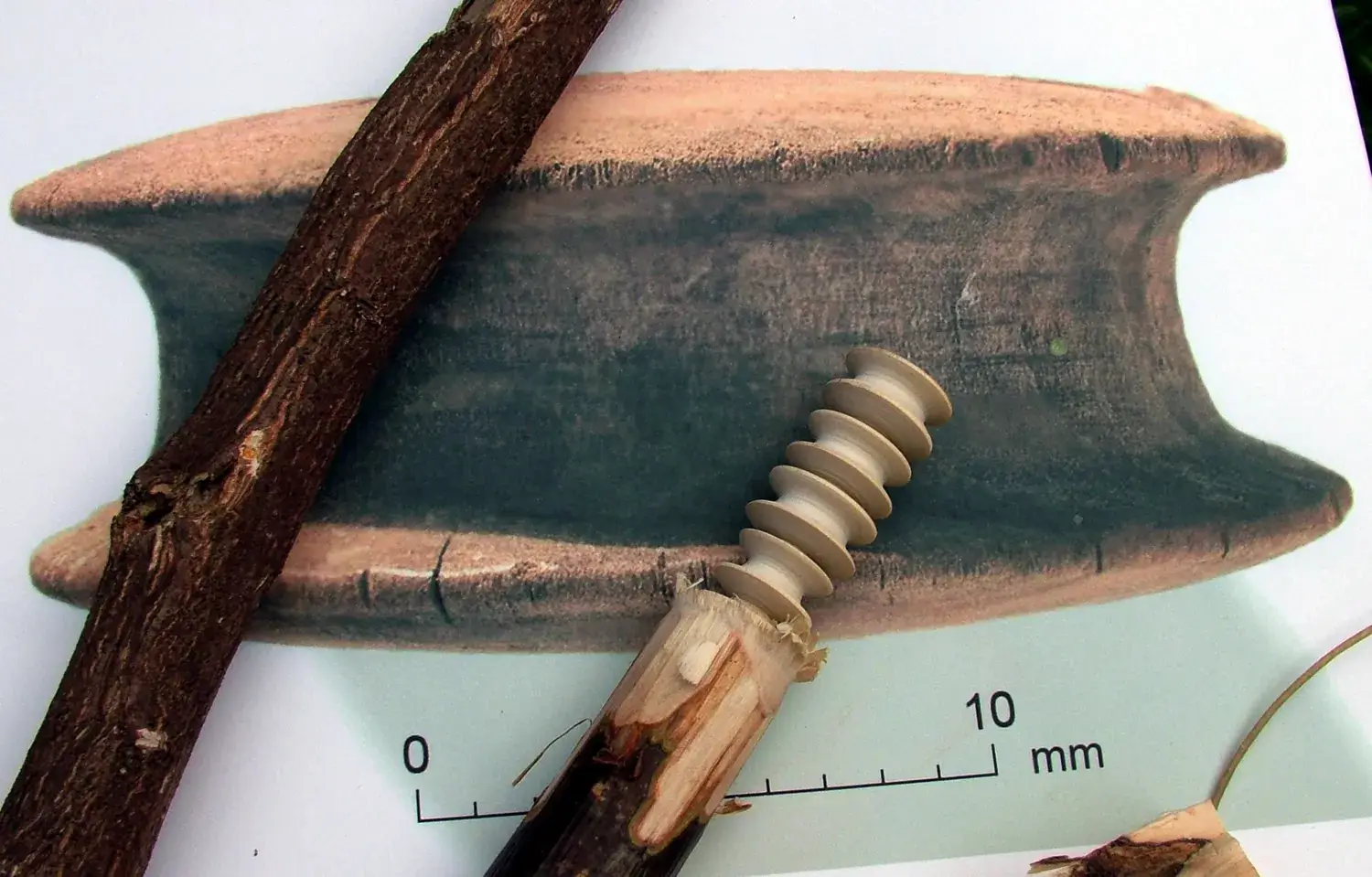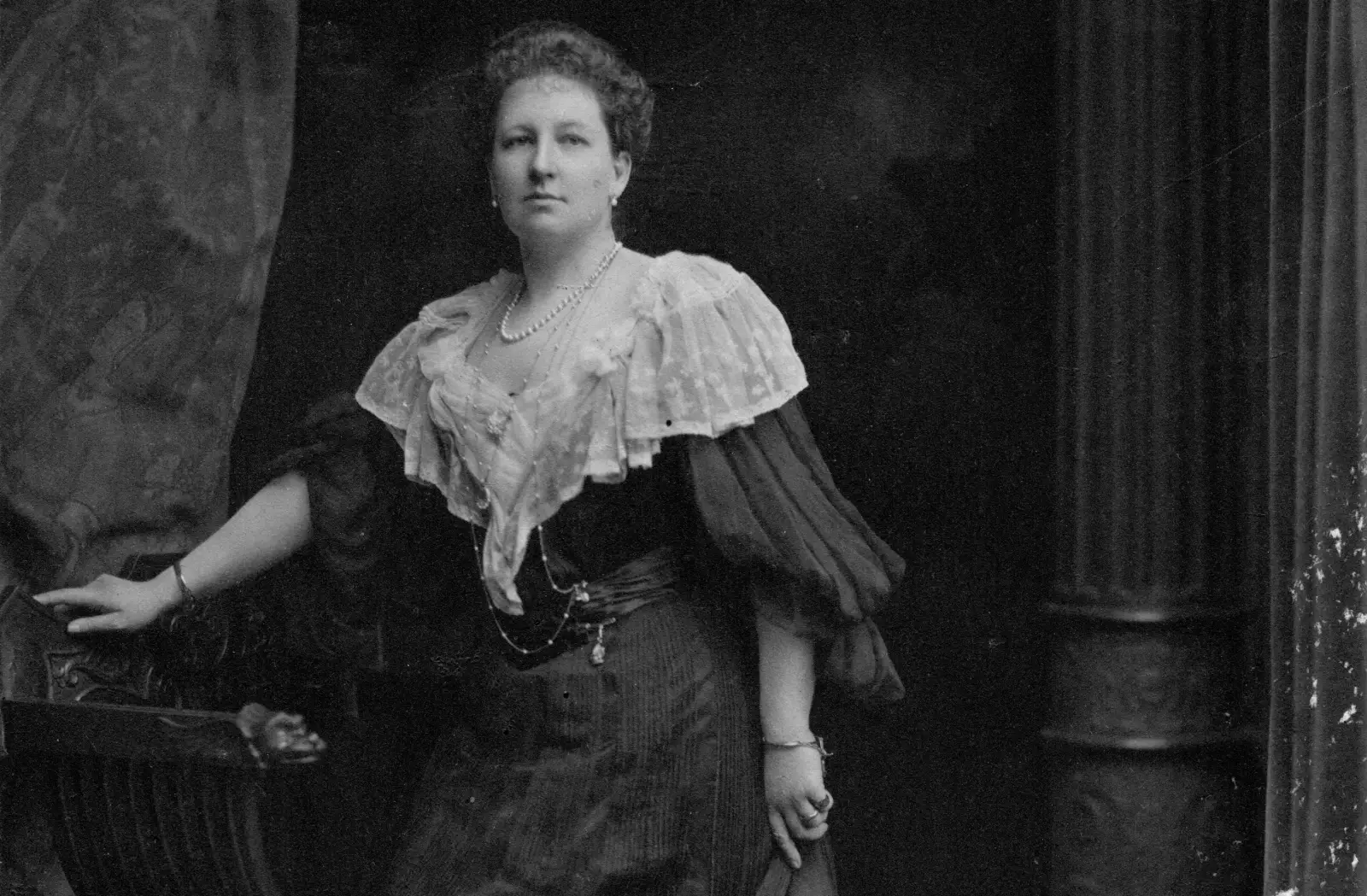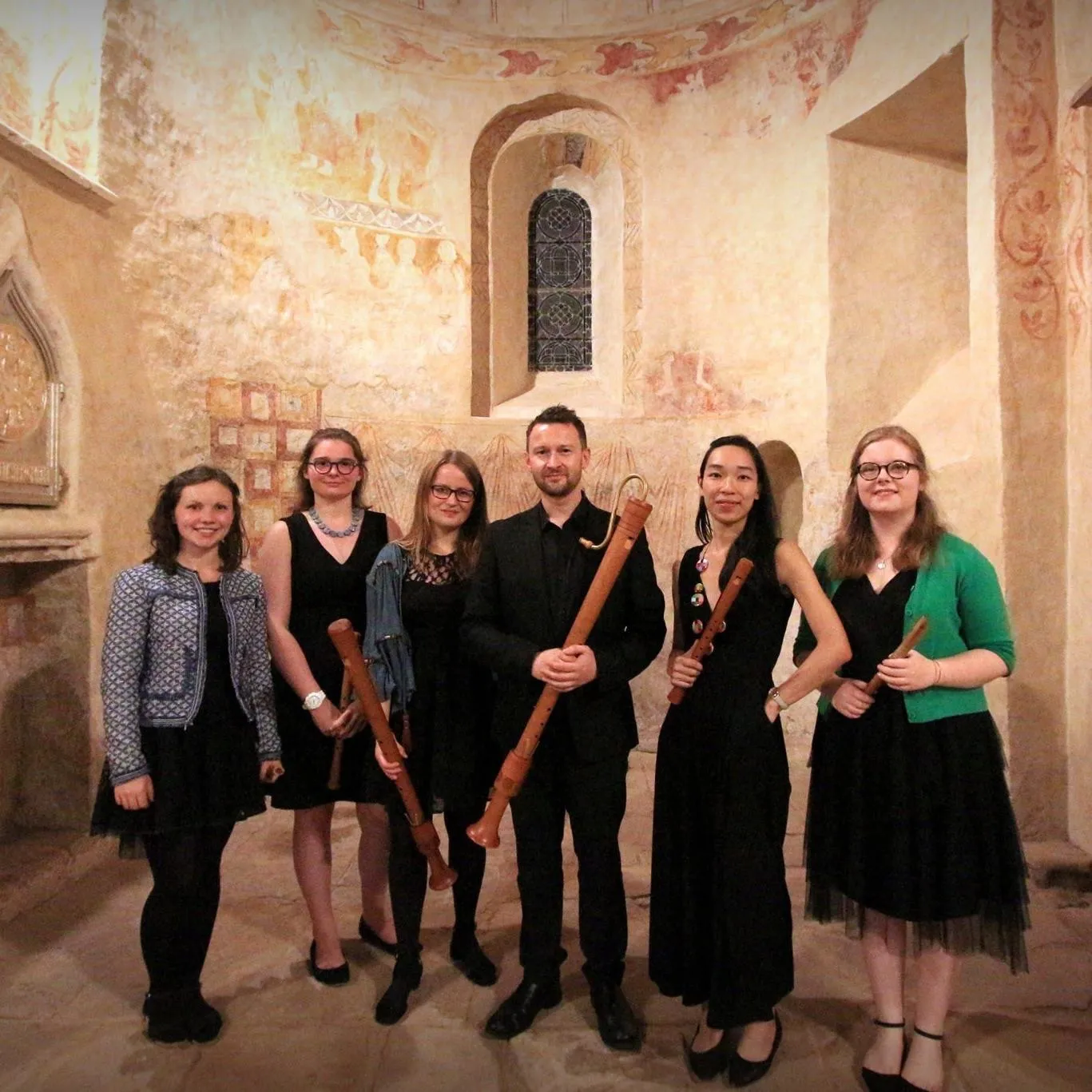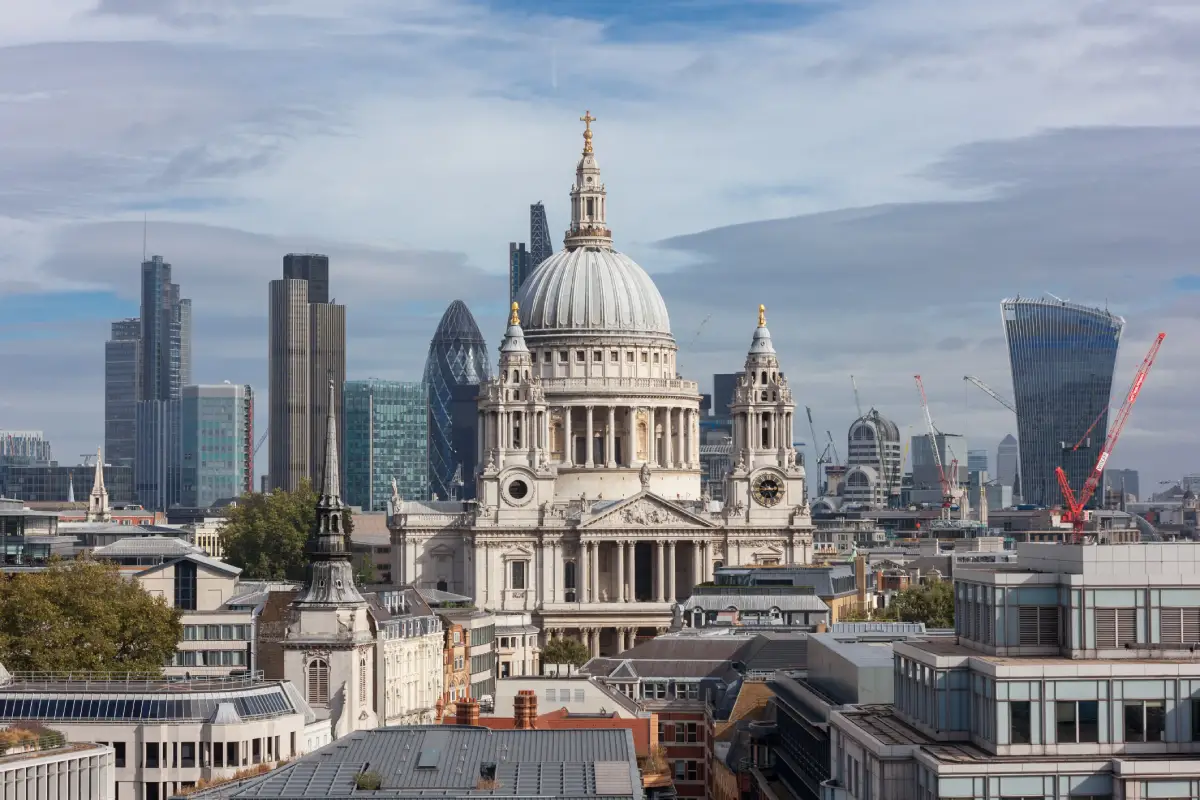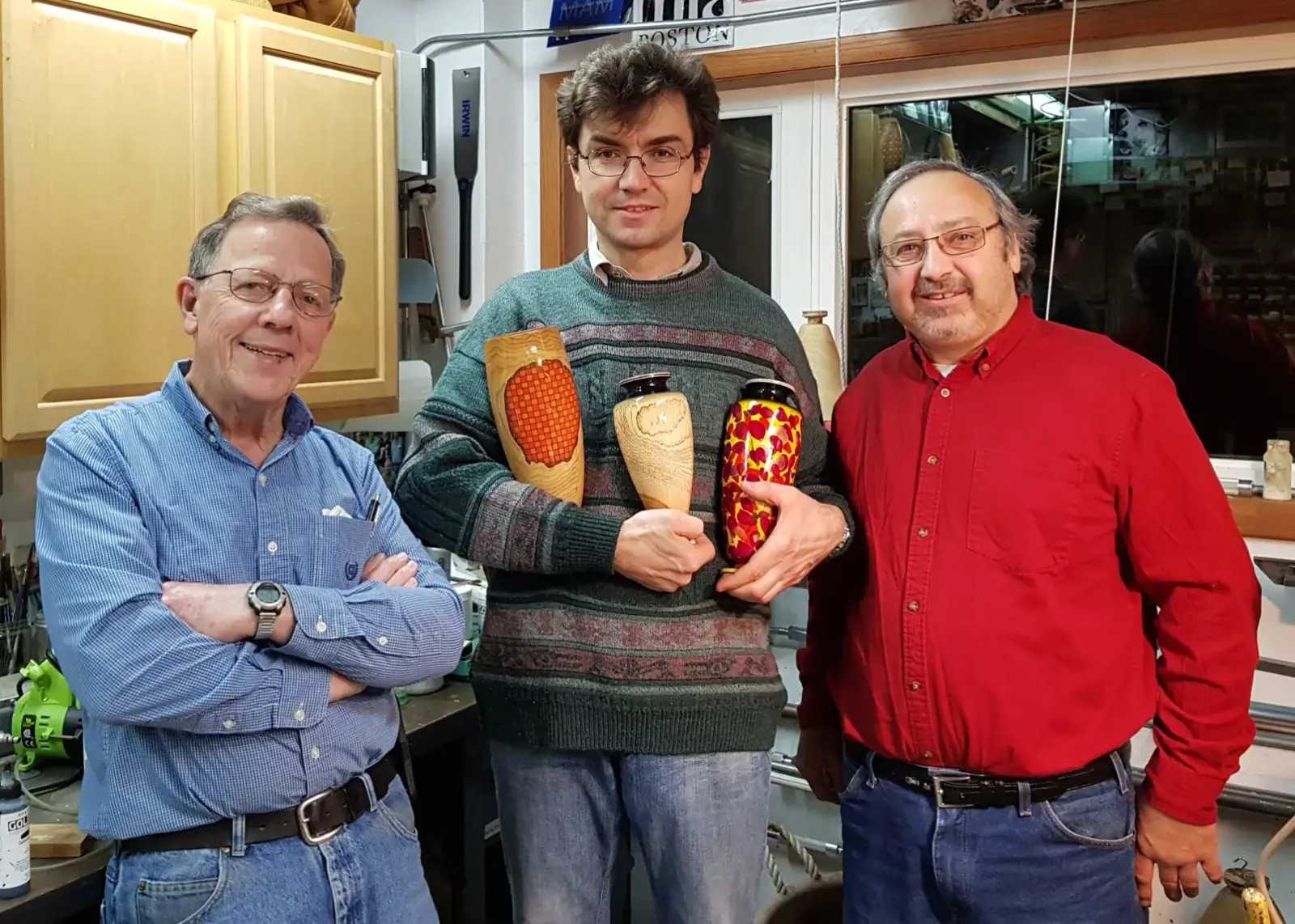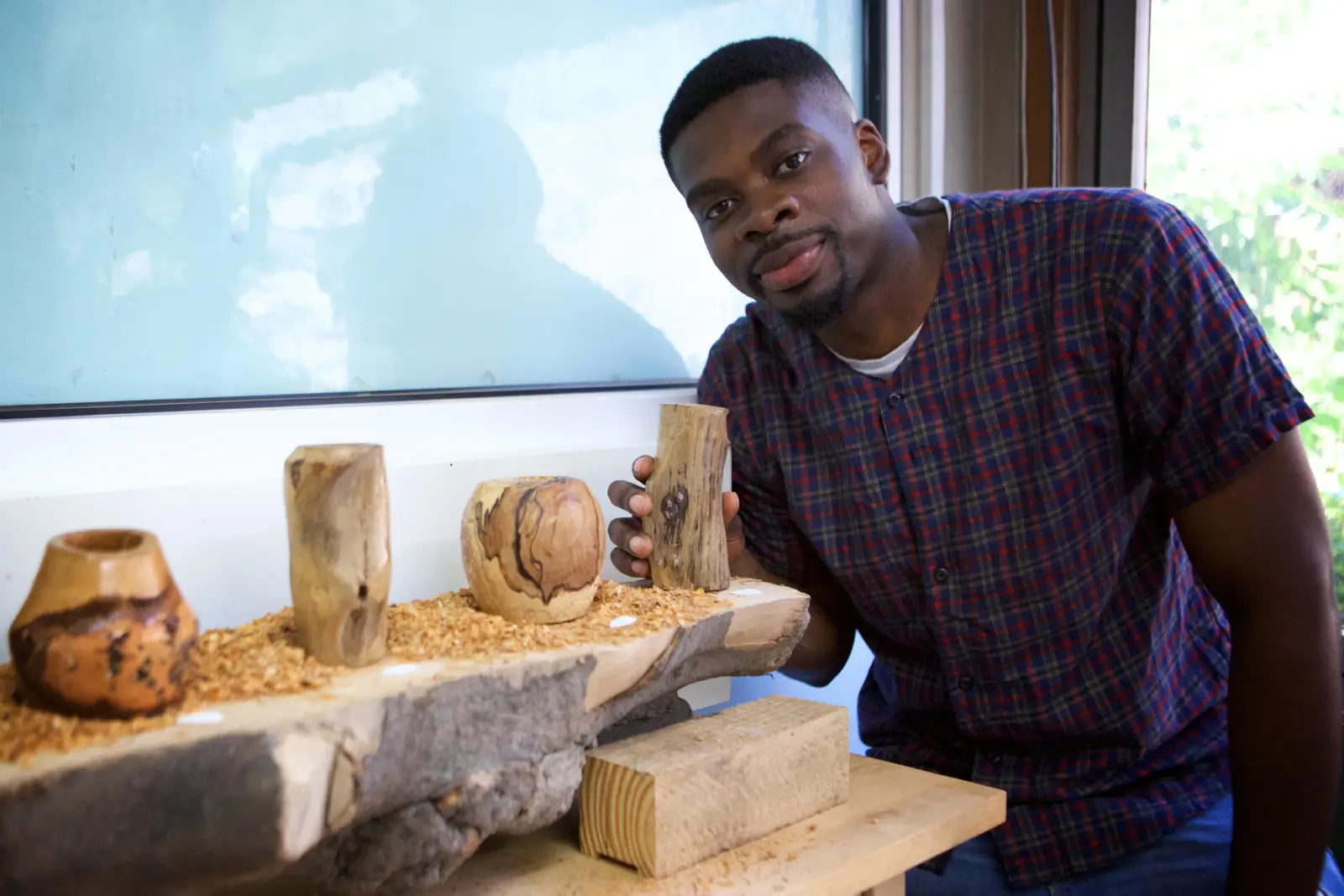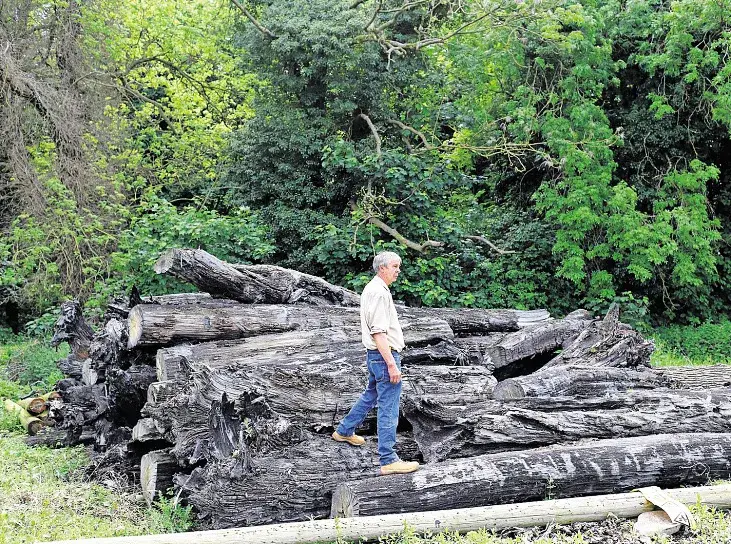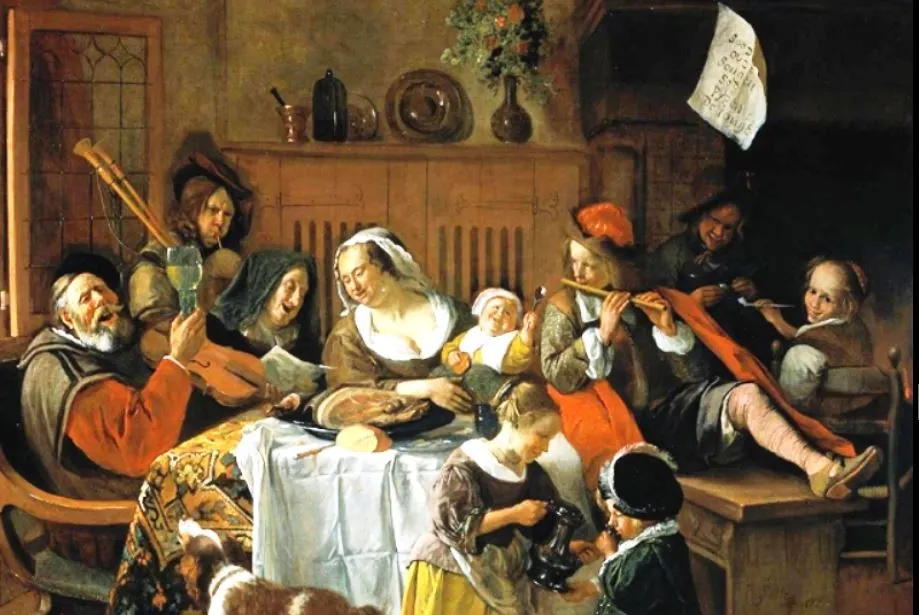REME and the Turners’ Company
“Craftsmen of the Army” – the Story of the Royal Electrical and Mechanical Engineers, tells how the Corps’ earliest roots reach far down into military history. As craft developed in support of military operations the Army travelled with Armourers and Smiths, Bowyers and Fletchers, Farriers, Loriners and Saddlers, Carpenters and Wheelwrights – and Turners.
These were the military crafts which were the forebears of REME, keeping the punch in the Army’s fist of those days long ago. From the earliest times skilled craftsmen have been recognised as providing essential support to military campaigns and their ancient crafts are all supported through the Livery Companies of London today.
In Henry V’s expeditionary force which set sail for Harfleur and Agincourt there were 120 Carpenters and Turners, together with a Master Carpenter and a Master Turner, summoned by the King’s writ on 11th April 1415. They were ordered to board the invasion fleet by 8th May 1415.
Medieval siege engines
The Carpenters and Turners were essential to construct and maintain Henry’s siege engines. Artillery was still in its infancy and massive catapults and other siege engines were still the most common field weapons. There were Arblasts, Ballistas, Bricoles, Mangonels, Onagers, Robinets, Springalds – and there were the mighty Trebuchets.
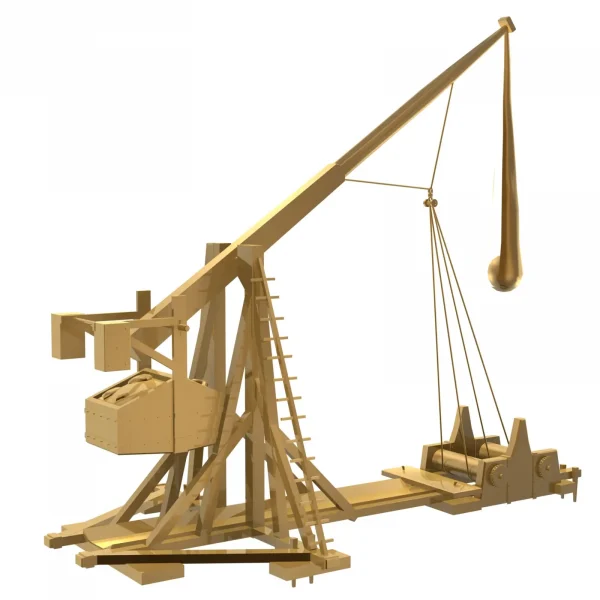
The Trebuchet was an ingenious and massive, gravity powered, catapult siege engine, some 8 metres high, capable of projecting missile stones of up to 150kg and over distances of up to 300 metres. Commonly the projectiles were around 50 – 100kg and could be launched every 15 seconds; four trebuchets working together could reduce a town behind battlements to rubble within a day. Sometimes rotting animal carcasses were launched to spread disease, Greek Fire – an incendiary – could be used to set buildings alight or the severed heads of battlefield victims could be used to spread terror.
The Trebuchet was assembled in the field where it was needed; it was a massive construction using some 20 wagon loads of timber. Typically the launching arm was four times the length of the weighted arm – and with a sling at the end of the launching arm. The vital job of Battlefield Turners was to ensure the supply of essential moving parts: axles, pulleys, blocks, capstans and spindles, all made accurately and out of durable hardwoods. The turners’ role was to keep this vital battle winning equipment in the hands of the troops – much like the role of the modern REME Craftsman.
Turners’ and the Navy
With improvements in gunpowder and metal founding the Trebuchet inevitably lost its place as a siege engine to the battlefield cannon and turners’ primary support to the military shifted to the expanding Navy. Warships were increasingly dependent on reliable turned pulley blocks to raise and manoeuvre sails, dead-eyes to support rigging and bearings for the rudder. They also needed turned wooden components for capstans, pumps and steering gear as well as for more prosaic items like bowls and tankards.In the Ordinances of 1608 The Master and Wardens of the Turners’ Company were given authority to fine any Turner who made “Blocks, Sheaves, Deadmen’s Eyes, Ribs, Trundles for Barrel Pumps, Rammers or Sponge Heads to the damage of His Majesty’s Navy by reason of their being made of very bad or insufficient stuff”.
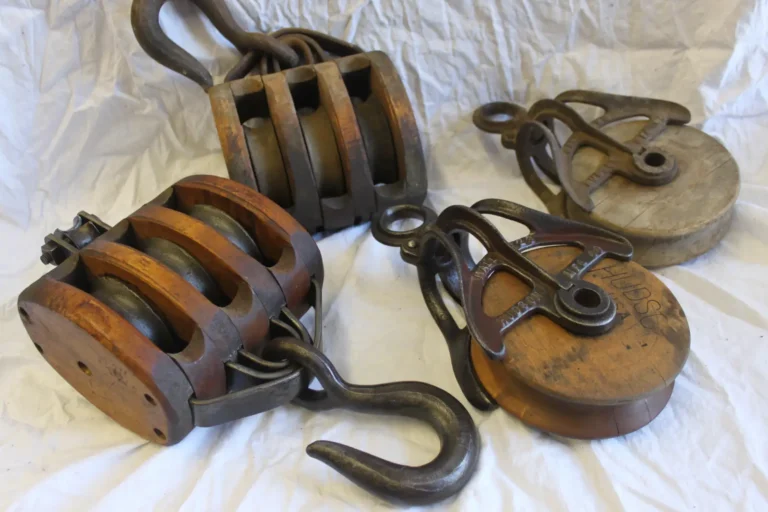
Formation of REME recognised by the Turners’ Company
In February 1943 Major-General Eric Bertram Rowcroft, Founding Army Director of Electrical and Mechanical Engineering, was presented with the Honorary Freedom of the Turners’ Company together with a silver porringer and cover, of Charles II design, for the Headquarters Mess of the Corps. On the inside lip is inscribed “Ex dono the Worshipful Company of Turners of London to the Corps of the Royal Electrical and Mechanical Engineers on its formation under Royal warrant 22nd May 1942” followed by the Company’s motto “By faith I obteigne” (By faith I obtain). The hope expressed was that the Turners Company could bring some additional tradition and historical background to the Corps as well as sharing the emphasis it places on the maintenance of skill in modern craftsmanship.
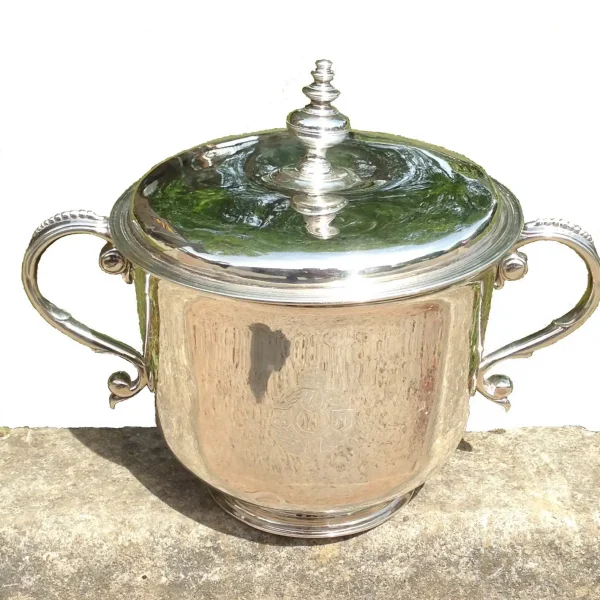
Turners’ Company ‘adopts’ REME, 23 (Southern) Corps
In December 1952 it was suggested that City Livery Companies should revive the old tradition whereby from Elizabethan times they were linked with the early “trained bands”, the forerunners of the Reserve Forces of today. The Turners’ Court of Assistants saw this as an opportunity to forge a still closer link with the Corps and following a suggestion from Honorary Colonel H. Randall Steward, TD, a liveryman of the Company, responded by “adopting” HQ REME, 23 (Southern) Corps Troops TA and Units under Command.
Furthermore in order to put this new relationship with a TA formation to some practical effect, it was agreed to present a new Turners’ Company Shield for craftsmanship to be competed for annually, by units under command, with the object of encouraging the individual skill and workmanship so essential in a craftsmen’s Corps.
From 1961 the Turners Shield became the winner’s trophy for Exercise Southern Craftsman – with some eighteen REME volunteer units competing in nine military disciplines.
The Turners’ Shield and Exercise Griffin Spanner
After the demise of Exercise Southern Craftsman the Turners’ Shield was adopted, in 2013, as the Winner’s Trophy for Force Troops’ Exercise Griffin Herald, latterly Exercise Griffin Spanner, at the instigation of Liveryman, Brigadier Bill O’Leary – appointed to the Turners Court of Assistants in 2015, and Col Paul Mitchell. The Turners’ Shield was first presented by the then Master of the Company at the annual camp for all units held at Thetford in 1954 to competition winners 89 (Field) AGRA Workshop TA. It continues to be awarded each year and in May 2016 was presented by the current Master of the Company, Nicholas Somers, to 159 Coy (101 Bn) REME.
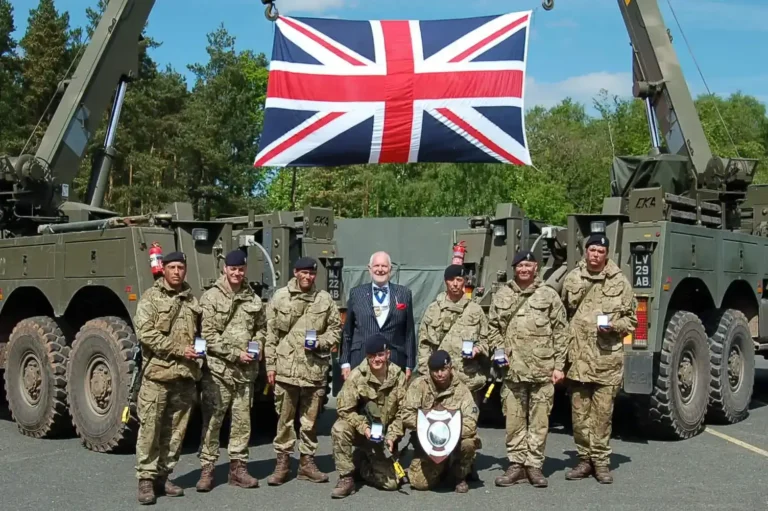
REME members of the Turners’ Company
The Company’s links with REME have been strengthened over the years by election to the Livery of many senior officers including Major Generals Sir Leslie Tyler, Sir Leonard Atkinson, Peter Girling, Christopher Tyler, Dennis Shaw – who also for a period served as the Company’s Clerk, and Tim Tyler.
Former REME Officers who have served as Master of the Company have been Major General Sir Leslie Tyler (1982), Major General Sir Leonard Atkinson (1987), Major General Christopher Tyler (2000), Colonel Robert Lucas (2008), Major Peter Ellis (2010), Colonel Peter Gibson (2012) and Colonel John Bridgeman (2014).
An additional Competition for Overall Excellence in REME, and open to both Regular and TA units, was initiated in 2003 with the prize first awarded at the 2004 Company’s Ladies’ Dinner. Every year since then the Company has presented a perpetual medal in the form of a magnificent lignum vitae Wassail Bowl as well as a small permanent memento demonstrating fine turning. Lignum vitae has now become a protected species and with its many unique properties is the most valuable of all tropical hardwoods. The current holder (2016) of the Wassail Bowl is 8 Training Bn REME.
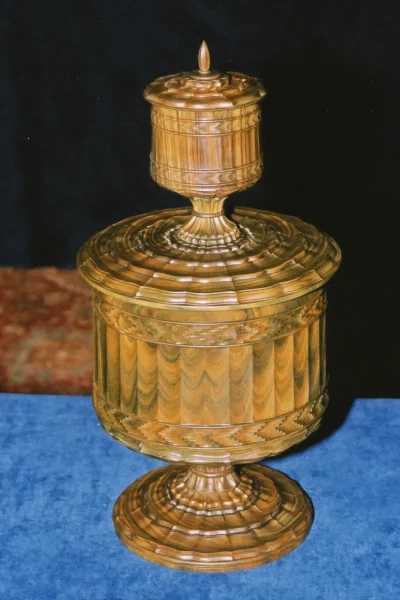
Paying tribute to links between The Corps and The Turners’ Company, Colonel REME, Dan Scott said recently:
“The links between REME and the Worshipful Company of Turners date back over many years. Our Armourers and Artificer Weapons particularly, but each REME trade, share some of the technical skills of both the Turners’ Company’s ancestors and today’s practising turners. We share a common bond of friendship and engineering expertise. The generous support provided to the Corps by the Worshipful Company of Turners, especially to Exercise GRIFFIN SPANNER, and through the annual award of prizes will ensure our common links continue to strengthen and last into the future”
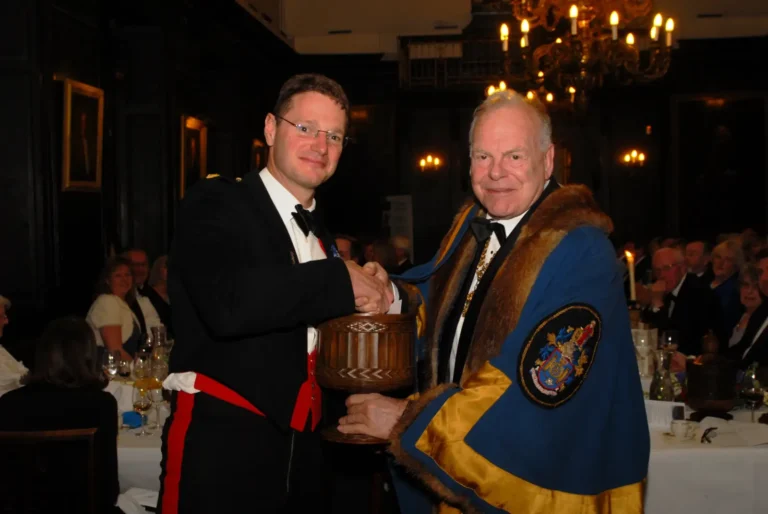
In 2013 Liveryman Turner Alderman Fiona Woolf became Lord Mayor of London and, to support her, the Company and REME worked together to stage a joint float – and the longest and heaviest in the whole show! Towed by a new MAN Recovery Vehicle, REME and Turners’ skills were on full display to London streets lined with over 300,000 cheering people, and escorted on foot by uniformed REME military personnel and civilian Turner Whifflers (Turners’ Livery Attendants clearing the way for the procession!)
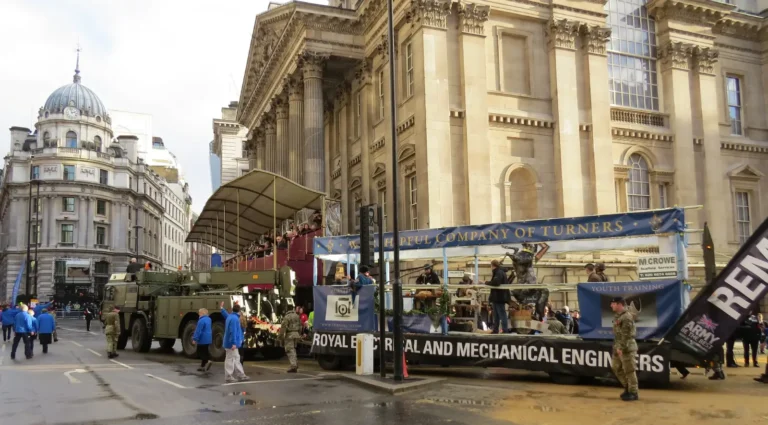
Formation of the Turners’ Military Liaison Committee
The Turners Company’s relationship with REME continues to develop. A Turners’ Military Liaison Committee comprises Corps and Livery Company representatives with Colonel REME sitting ex officio. The Committee’s Chairman is Liveryman Lieutenant Colonel Lex Agathangelou, a former Lieutenant Colonel REME TA, and it meets alternately at REME HQ or the Turners’ London Offices.
Colonel John Bridgeman CBE TD DL, late REME
(Master Turner 2014/15)
